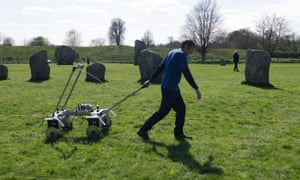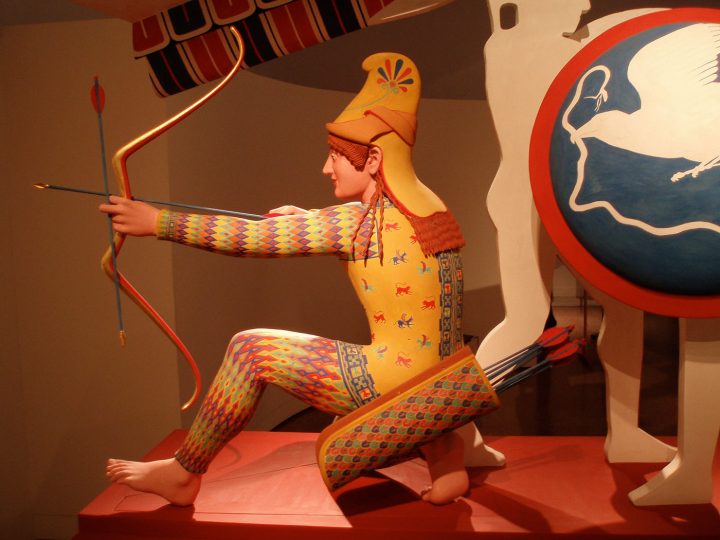via Boing Boing by David Pescovitz
A few days ago in North Dakota, storm chaser Mike Olbinski made this absolutely incredible time-lapse video of undulatus asperatus clouds. This class of cloud is the first cloud category added to the International Cloud Atlas since 1951.
=============================
via BBC News
From robot simians that can clean up nuclear accidents, to powered exoskeletons that enable you to lift huge objects, robotic technologies are developing incredibly quickly. Ashitey Trebi-Ollennu, chief engineer at Nasa’s Jet Propulsion Laboratory, talks us through five robots that are changing the world.
Continue to the video (cannot embed it)
=============================
via Boing Boing by Andrea James
These days, a conveyor belt can be so much more than a belt. Omnidirectional belts are programmable, allowing items to be rotated, aligned, and even transferred to other belts as they zip along.
Continue reading
=============================
via the Guardian by Hannah Devlin Science correspondent

A mysterious square formation has been discovered within the Neolithic stone circle monument at Avebury, rewriting the narrative of one of the wonders of the prehistoric world.
Archaeologists believe the hidden stones, discovered using radar technology, were one of the earliest structures at the site and may have commemorated a Neolithic building dating to around 3,500 BC.
Continue reading
=============================
via OUP Blog by Andreas Önnerfors

The traditions, origin and early history of Freemasonry (1882) by Internet Archive Book Images. Public domain via Wikimedia Commons.
Around midsummer 1717, the first masonic Grand lodge is said to have been created in London. Although the event is not documented in any primary sources, Freemasons across the globe – and there are between 2 and 3 millions of them – celebrate this tercentenary with a host of special events: concerts, exhibitions, and parades. But what role has the fraternity – that in our day also includes a growing number of women – played in history? Who were the men (and women) attracted by secrecy, initiation, and symbolism? Are the masonic lodges precursors of modern civil society?
Continue reading
=============================
via Boing Boing by Caroline Siede
National Museums Liverpool details all the layers 18th century upper class British women were expected to wear each day. The best part? Secret, removable pockets!
=============================
via 3 Quarks Daily: Natalie Angier in The New York Times
To the Mesopotamians, the liver was the body’s premier organ, the seat of the human soul and emotions. The ancient Greeks linked the liver to pleasure: The words hepatic and hedonic are thought to share the same root. The Elizabethans referred to their monarch not as the head of state but as its liver, and woe to any people saddled with a lily-livered leader, whose bloodless cowardice would surely prove their undoing. Yet even the most ardent liverati of history may have underestimated the scope and complexity of the organ. Its powers are so profound that the old toss-away line, “What am I, chopped liver?” can be seen as a kind of humblebrag.
Continue reading
=============================
The equation of white marble with beauty is not an inherent truth of the universe; it’s a dangerous construct that continues to influence white supremacist ideas today.
via Arts & Letters Daily: Sarah E. Bond in Hyperallergic

The Archer from the western pediment of the Temple of Aphaia on Aigina, reconstruction, color variant A from the Gods of Color exhibit (photo by Marsyas/Wikimedia, CC BY-SA 2.5)
Modern technology has revealed an irrefutable, if unpopular, truth: many of the statues, reliefs, and sarcophagi created in the ancient Western world were in fact painted. Marble was a precious material for Greco-Roman artisans, but it was considered a canvas, not the finished product for sculpture. It was carefully selected and then often painted in gold, red, green, black, white, and brown, among other colors.
A number of fantastic museum shows throughout Europe and the US in recent years have addressed the issue of ancient polychromy. The Gods in Color exhibit travelled the world between 2003–15, after its initial display at the Glyptothek in Munich. (Many of the photos in this essay come from that exhibit, including the famed Caligula bust and the Alexander Sarcophagus.) Digital humanists and archaeologists have played a large part in making those shows possible. In particular, the archaeologist Vinzenz Brinkmann, whose research informed Gods in Color, has done important work, applying various technologies and ultraviolet light to antique statues in order to analyze the minute vestiges of paint on them and then recreate polychrome versions.
Continue reading
=============================
via Interesting Literature

Illustration of Humpty Dumpty by William Wallace Denslow (1902), via Wikimedia Commons.
Humpty Dumpty was originally a drink, then he became an egg in a nursery rhyme. Quite how this happened, nobody seems to know, but it did. The name ‘Humpty-dumpty’ was given to a drink of boiled ale and brandy in 1698, and that’s only the first known reference in print – the name is probably considerably older. By 1785, as Francis Grose recorded in his fascinating collection of contemporary slang, A Classical Dictionary of the Vulgar Tongue, the rhyming term had been applied to people, and was used specifically to describe a ‘short, dumpy, hump-shouldered person’ and, by extension, a clumsy person. But the words ‘Humpty-Dumpty’ mean one thing and one thing alone to most readers: an egg in the famous nursery rhyme which begins, ‘Humpty Dumpty sat on a wall’. What is the meaning of this little rhyme, and what are its origins?
Continue reading
=============================
via Arts & Letters Daily: Mark Edmundson in The Hedgehog Review
We commonly think of hangovers as the next-day result of too much alcohol. We overdo it the night before, and the following morning we pay. We develop flu-like symptoms. We get a headache; our joints hurt; it’s an unpleasant thing to stare too long at the light, which seems all too inclined to stare back – hard. Whatever optimism we might have stored away in the vault of our psyche seems to have disappeared. We’re down, sorry, sad, and grim. We feel as if we have succeeded in poisoning ourselves – and the word is that we have. The word toxic hides in the middle of intoxication, like a rat in gift box. We’ve infected our bodies with toxins, and at first we got a happy ride. Some scientists speculate that the euphoria induced by drinking may come from the way alcohol summons forth energies to fight against the possibility that we’ve been poisoned. Being drunk, or even tipsy, thus understood, is elation as the defenders come roaring into the breach like a wave of charging knights. Banners flap, armor clangs, the hautboys sound in the air.
Continue reading
No comments:
Post a Comment